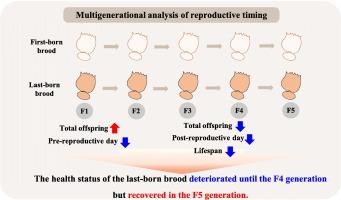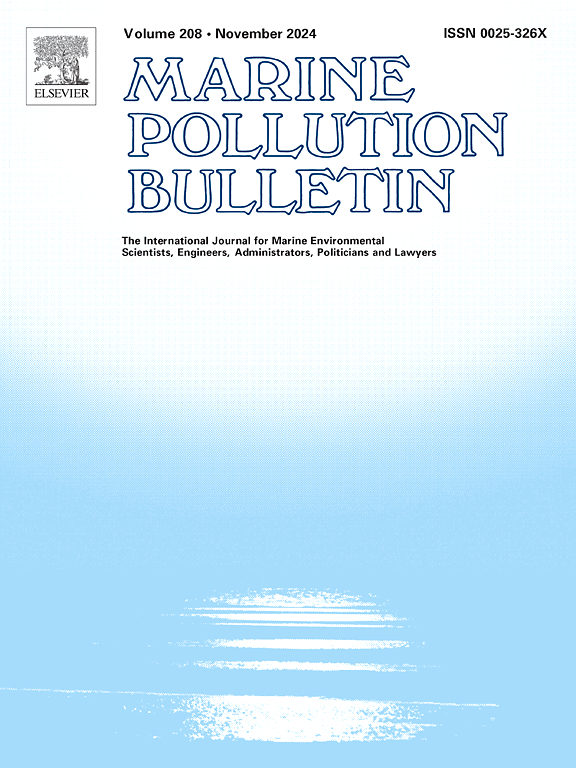Multigenerational analysis of reproductive timing and life cycle parameters in the marine rotifer Brachionus plicatilis
IF 5.3
3区 环境科学与生态学
Q1 ENVIRONMENTAL SCIENCES
引用次数: 0
Abstract
Reproductive timing in organisms can influence reproductive success and longevity, yet its long-term effects remain underexplored. This study monitored the first- and last-born offspring of Brachionus plicatilis across five generations to examine the impact of breeding timing on fertility and longevity. The last-born group produced more offspring in the F1 and F2 generations. However, the first-born group produced more offspring from the F3 generation onward, with statistically significant differences observed in the F4 generation. Survival analysis indicated no differences up to the F3 generation. However, the post-reproductive period was significantly shorter in the last group compared to the first group in the F3 and F4 generations. These findings suggest that delayed breeding timing cumulatively reduces reproductive output and lifespan, though recovery may occur in the F5 generation. This study provides valuable insights into the generational effects of breeding timing and may inform reproductive strategies in similar species.

海洋轮虫 Brachionus plicatilis 生殖时间和生命周期参数的多代分析
生物的繁殖时间可影响繁殖成功率和寿命,但其长期影响仍未得到充分探索。本研究通过监测五代Brachionus plicatilis的头生和末生后代,研究繁殖时间对繁殖力和寿命的影响。在 F1 和 F2 代中,后生组产生了更多的后代。然而,从 F3 代开始,头生组产生了更多的后代,在 F4 代观察到了显著的统计学差异。生存分析表明,F3 代之前没有差异。然而,在F3代和F4代中,最后一组的繁殖后代期明显短于第一组。这些研究结果表明,繁殖时间推迟会累积降低生殖产量和寿命,但在 F5 代可能会恢复。这项研究为了解繁殖时间的世代效应提供了宝贵的见解,并可为类似物种的繁殖策略提供参考。
本文章由计算机程序翻译,如有差异,请以英文原文为准。
求助全文
约1分钟内获得全文
求助全文
来源期刊

Marine pollution bulletin
环境科学-海洋与淡水生物学
CiteScore
10.20
自引率
15.50%
发文量
1077
审稿时长
68 days
期刊介绍:
Marine Pollution Bulletin is concerned with the rational use of maritime and marine resources in estuaries, the seas and oceans, as well as with documenting marine pollution and introducing new forms of measurement and analysis. A wide range of topics are discussed as news, comment, reviews and research reports, not only on effluent disposal and pollution control, but also on the management, economic aspects and protection of the marine environment in general.
 求助内容:
求助内容: 应助结果提醒方式:
应助结果提醒方式:


